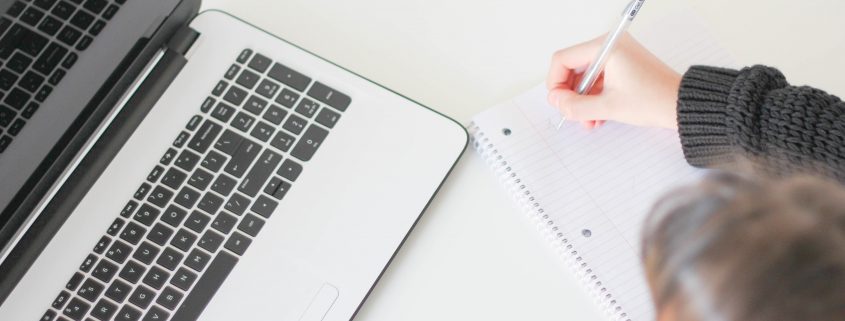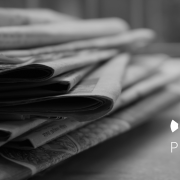How to Prepare for a Successful Trade Show
When preparing to exhibit at a trade show, it’s critical that you stay organized. The success of your trade show hinges on your team’s ability to execute each part of the process properly, and on schedule. No pressure, right?!
Take the stress out of preparing for your next trade show by keeping track of responsibilities in a simplified checklist. If you’re looking for a place to get started, you’re in the right place. We’ve compiled a comprehensive list of tasks to help you prepare for a successful trade show.
To download the checklist, which you can edit and personalize to your business needs, click here. This is a resource you’ll turn to time and time again. In addition to the checklist, we’ve also included a Sample Packing List (tab 2), as well as a Sample Itinerary (tab 3). These additional resources are best stored together, in our experience.
Below, we’ve outlined the tasks in a bullet-point list, so you can get a feel for what’s included in the downloadable checklist.
- Research show information & request application materials for exhibitors – Be sure to note how much your desired booth space might cost, along with any other required fees such as carpet or power.
- Review Event Manual to understand all event-specific details – Do this early so you can plan accordingly. Note any special events that your team will want to attend, and add that to your itinerary.
- Research booth display vendors and artwork deadline(s) – If you plan on creating a new booth display, start looking into vendors to understand cost and deadline(s) for artwork.
- Outline your budget – Outline the expected budget for this show. Include the cost of the booth space, booth display, booth attractions, lighting, rigging, electrical, Wi-Fi, carpet, T&E, lodging, and lead retrieval.
- Evaluate promotional opportunities (like mailers sent from show organizer, for example) – Most trade show attendees create an agenda for who they’d like to visit. Make sure you’re on their list! Interacting with attendees ahead of the event is key, so educate yourself on the opportunities that the show organizer will provide for exhibitors. Mailers sent from the show organizer are a great example of interacting with registered attendees in a way that stands out from the rest of the email blasts. Find out what your options are, and the due dates for submission.
- *Evaluate lead capture options – Most trade shows partner with a lead retrieval provider for exhibitor lead capture. Badge scanning is antiquated and cannot fully integrate with the technology you already have in place. Consider an event lead management solution, like GoExhibit!™, which integrates seamlessly with their in-house marketing automation, sales automation, and CRM solutions OR the 3rd party CRM software, marketing automation software, or other technology you already have in place.
- *Request Developer’s Kit (or API) from Lead Retrieval Provider – This step will only be necessary if you plan to use an independent lead capture solution. The benefits of using an independent lead capture solution are extensive, but one is that it provides a consistent experience for your booth representatives across all of your events. You’ll simply need to facilitate a connection between your lead capture solution and the show-appointed lead retrieval provider per event.
- Host a Team Meeting, #1 – Use this time to announce company attendance and discuss details such as who will attend, what your goals are for lead capture, and so on.
- Register booth personnel – After your team decides on who will be in attendance, make sure to register them with the event organizers.
- Submit Directory Listing -The show organizer should provide a deadline for when you’ll need to submit your information for the Directory. Don’t miss this key step, so registered attendees know that you’ll be there.
- Outline your promotion strategy – How will you advertise your attendance and entice visitors to stop in? Try an omnichannel approach, which can include direct mail, email, social media, and more!
- Plan booth design – Where will you set out business cards? How will traffic flow through your booth? Where will you display your product or solution?
- Plan booth attractions – Everyone loves a good booth attraction. We recommend announcing your booth attraction in your promotional material to increase the hype around your booth.
- *Outline your post-show workflow – Map out how you plan on communicating with Prospects post-show. We recommend an omnichannel approach. Sending a text message immediately upon lead capture can be very impactful, and will keep your brand top-of-mind. Email follow-ups a few days after the event has concluded (so that you miss the Out-of-Office window) with a picture of your team at your booth will remind your Prospect of their conversation with your team. A handwritten letter that includes a business card (or even a $5 Starbucks gift card!) sent a week or two later will really drive home your message and further solidify the relationship you team started at the event. *Pro Tip: Personalize your follow-up by merging any combination of data collected from your lead capture form. Include links to educational content based on the product or solution that they were most interested in.
- Finalize attire – Do this early in the process so that you have time to order anything you’ll need customized (matching collared shirts with company logo, for example). And don’t forget to advise on required pants/shoes, too. You’d rather be over-prepared than run the risk of having a newbie show up in jeans and flip flops.
- Host a Team Meeting, #2 – In this meeting, review your promotional campaign, post-show workflow, booth design, booth attractions, attire, and more. Make sure everyone is on the same page before creating all of the material.
- Notify show management if using the show organizer-appointed contractor – If your trade show requires that you use a show organizer-appointed contractor of things like installation, make the proper arrangements early to avoid last-minute fees.
- Analyze all existing exhibitors – Most show organizers will provide a list of other exhibitors. Of your direct competitors, who will be in attendance at this event? Stalk their Twitter to find images of their previous booths and make sure yours is up to par. Are there any companies in attendance that you could partner with for booth attractions or takeaways?
- Create and execute your social media strategy – What’s great about social media is that you can go ahead and schedule all of your posts leading up to the event. This is a great task to get out of the way early. Make sure to include relevant event hashtags!
- Order booth giveaways (t-shirts, pens, etc.) – Make sure you order these in plenty of time, and provide a cushion in case they don’t turn out as planned. If you have access to the event attendee list, go a step further and poll attendees ahead of time to see what they might like to receive most. Then, they’ll really be looking forward to visiting your booth!
- Secure travel arrangements & lodging – If your event involves travel, make sure that everyone on your team has appropriate travel arrangements and lodging. Make sure to account for setup and breakdown of your booth. Rumour has it that Tuesdays are the best day to purchase airfare. Also, most trade shows offer a discounted rate with a local hotel. Check for that first!
- Order Carpet – Carpet is required for most indoor trade shows. If you don’t need to match the carpet to your booth theme, consider using the same color as the event organizers are using in the walkways to encourage traffic flow into your booth.
- Order Electrical – If required. Tip: Find out how much power your booth lighting will need, and order that at a minimum.
- Order Wi-Fi – If needed. Tip: Bring your own hotspot to avoid costly fees.
- *Create your lead capture form – If using a customizable solution like GoExhibit!™, you’ll want to create your lead capture form early and share with your team. Ensure that you are collecting everything you need from booth attendees. Create conditional questions based on interest, and include voice recording and voice-to-text functionality so that your sales team can record important data quickly and easily.
- *Create the content for your post-show workflow – You already mapped out your post-show workflow. Now all you have to do is create the content and piece it together!
- Prepare for technology needs (iPad, laptops, mobile devices for lead capture, etc.) – Make sure that each piece of required technology is on your Packing List, and don’t forget extra phone charges, charging blocks, extension cords, etc. (This checklist has a Sample Packing List included on tab 2!)
- Plan exhibit setup/dismantle – Assign responsibility for showing up early to help with setup and assign team members to the breakdown process, as well. Make sure to give anyone setting up or breaking down enough cushion between travel to make it work without stress.
- *Create an itinerary – Outline when your team should be where, so there’s no confusion. Include time frame for badge pickup, setup, exhibit hours, session hours, happy hours or client dinners, tear down hours, etc. If you are using an independent lead capture solution that supports documents, include your itinerary in the app so that your booth reps can easily access. (This checklist has a Sample Itinerary included on tab 3!)
- Host a Team Meeting, #3 – In this meeting, review your packing list and itinerary. Send a follow-up email to each of your team members with the exact items they are responsible for bringing. Answer any last-minute questions.
Lead Liaison offers one of the most powerful and holistic event lead management solutions in the industry, GoExhibit!. Above, we’ve noted which line items GoExhibit! can support with an asterisk (*).
To see a demo of GoExhibit!, request one here!
PHOTO CREDIT: https://uk.edubirdie.com/






